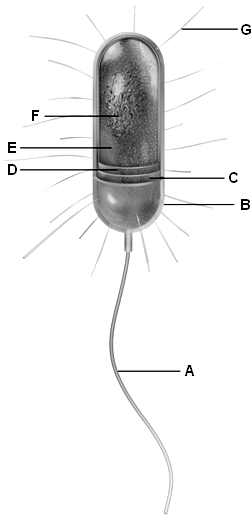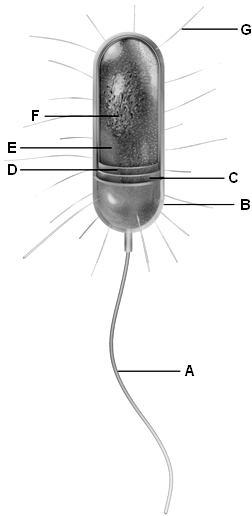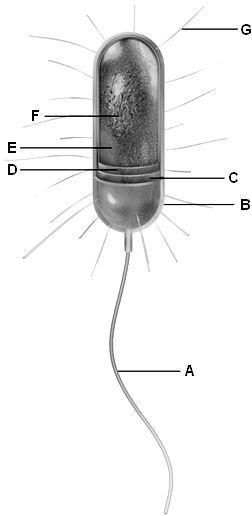A) Golgi body
B) mitochondria
C) lysosome
D) ribosome
E) endoplasmic reticulum
Correct Answer

verified
Correct Answer
verified
Multiple Choice
The double membrane of mitochondria contains the ATP-making machinery; therefore, this is where ____ would be found.
A) proteins and enzymes required for aerobic respiration
B) DNA
C) ribosomes
D) plasmids
E) vesicles
Correct Answer

verified
Correct Answer
verified
Matching
The following are organelles found in animal cells. Match the organelle with the appropriate description. An answer may be used more than once.
Correct Answer
Multiple Choice
Archaea were given their own separate domain because they are ____.
A) considered a type of bacteria
B) most closely related to eukaryotes
C) multicellular
D) nucleated
E) not prokaryotic
Correct Answer

verified
Correct Answer
verified
Multiple Choice
The organelle that pinches off portions of its membrane to form a vesicle used for storage or transport is the ____.
A) mitochondrion
B) chloroplast
C) nucleus
D) Golgi body
E) ribosome
Correct Answer

verified
Correct Answer
verified
Matching
Examine the following figure. Match each letter of the figure with the appropriate cell structure.

Correct Answer
Matching
Examine the following figure. Match each letter of the figure with the appropriate cell structure.

Correct Answer
Multiple Choice
How do archaeal and eukaryotic cell membranes differ?
A) Archaeal membrane phospholipids form covalent bonds with one another, but eukaryotic membrane phospholipids do not.
B) Eukaryotic membrane phospholipids are not composed of fatty acids, but archaeal membrane phospholipids are.
C) Archaeal phospholipids move freely throughout the bilayer, but eukaryotic membrane phospholipids are stationary.
D) Archaeal, but not eukaryotic, membranes are described by the fluid mosaic model.
E) Eukaryotic membranes are less fluid than archaeal membranes.
Correct Answer

verified
Correct Answer
verified
Matching
Match the following cytoskeletal filaments and their associated motor proteins with the appropriate description.
Correct Answer
Multiple Choice
The size of a cell is limited by the ____.
A) lack of building materials
B) size of the organism
C) relationship between the volume of the cell and its surface area
D) job it does
E) materials it has to exchange
Correct Answer

verified
Correct Answer
verified
Matching
The following are organelles found in animal cells. Match the organelle with the appropriate description. An answer may be used more than once.
Correct Answer
Matching
Examine the following figure. Match each letter of the figure with the appropriate cell structure.

Correct Answer
Multiple Choice
Which cell components are found in BOTH plant and animal cells?
A) nucleus, Golgi body, and chloroplasts
B) Golgi bodies, mitochondria, and endoplasmic reticula
C) vacuoles, cell wall, and mitochondria
D) vacuoles, cell wall, nucleus, and lysosomes
E) starch grains, chloroplasts, and lysosomes
Correct Answer

verified
Correct Answer
verified
Multiple Choice
The ____ is responsible for making the lipids that form the cell's membranes.
A) rough ER
B) smooth ER
C) Golgi body
D) peroxisomes
E) mitochondria
Correct Answer

verified
Correct Answer
verified
Multiple Choice
Which organelle is enclosed by a double membrane?
A) ribosome
B) nucleus
C) lysosome
D) peroxisome
E) Golgi body
Correct Answer

verified
Correct Answer
verified
Matching
The following are organelles found in animal cells. Match the organelle with the appropriate description. An answer may be used more than once.
Correct Answer
Matching
The following are organelles found in animal cells. Match the organelle with the appropriate description. An answer may be used more than once.
Correct Answer
Matching
Match each cell structure represented with the appropriate description.
Correct Answer
Multiple Choice
Cilia and flagella ____.
A) are found only in cells that are actively moving
B) are found only in sex cells and unicellular organisms
C) use motor proteins to induce movement
D) may also function as receptor sites for certain hormones
E) are found only in unicellular organisms
Correct Answer

verified
Correct Answer
verified
Matching
Match each cell structure represented with the appropriate description.
Correct Answer
Showing 21 - 40 of 101
Related Exams